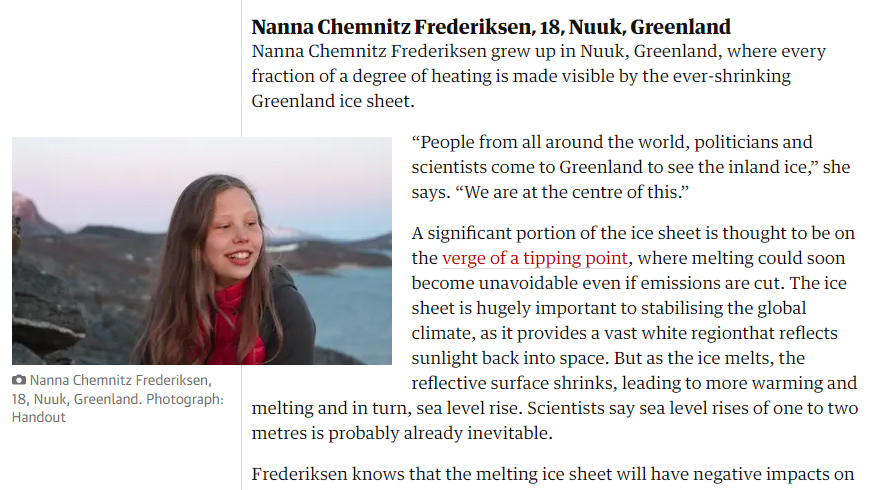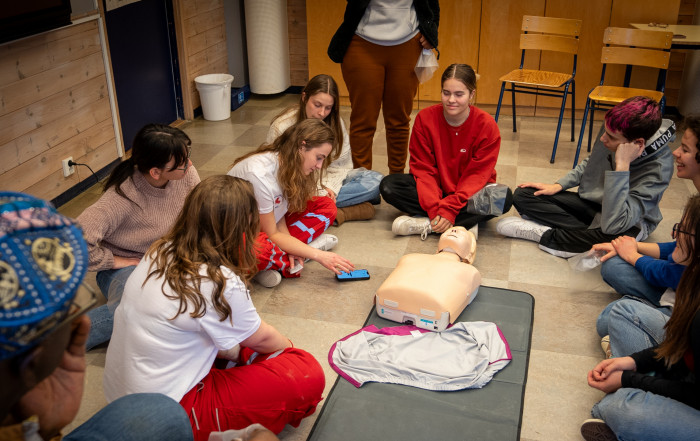“People from all around the world, politicians and scientists come to Greenland to see the inland ice,” she says. “We are at the centre of this.”
A significant portion of the ice sheet is thought to be on the verge of a tipping point, where melting could soon become unavoidable even if emissions are cut. The ice sheet is hugely important to stabilizing the global climate, as it provides a vast white region that reflects sunlight back into space. But as the ice melts, the reflective surface shrinks, leading to more warming and melting and in turn, sea level rise. Scientists say sea level rises of one to two metres is probably already inevitable.
Frederiksen knows that the melting ice sheet will have negative impacts on communities across Greenland, especially in northern settlements such as Qaanaaq where permafrost melting is destabilizing homes and roads and impacting how fishers and hunters operate.
But her real concern lies on the impact it will have globally. “I am not so scared of what the effects of the melting of ice in Greenland will be,” Frederiksen says, “It scares me what effect it can have for the rest of the world.”
Latest News
Graduation 2024
Dear Graduates, Your time at RCN has left a lasting mark on our community, weaving your unique stories into the very fabric of our school. Your classmates, roommates, friends, and teachers helped you become [...]
UWC Red Cross Nordic collaborating with the Nobel Peace Centre
On Wednesday 3rd April 7 of our students visited the Nobel Peace Centre in Oslo for an action packed day of workshops that culminated in a panel discussion. Amalia (Norway), Asta (Denmark), Maya [...]
Weeks of Discovery: Special Weeks at UWC Red Cross Nordic
At Red Cross Nordic UWC, learning is a holistic journey. Students embark on enriching experiences that spark their interests, develop their abilities, and forge meaningful connections. For two weeks in February experiential learning [...]



